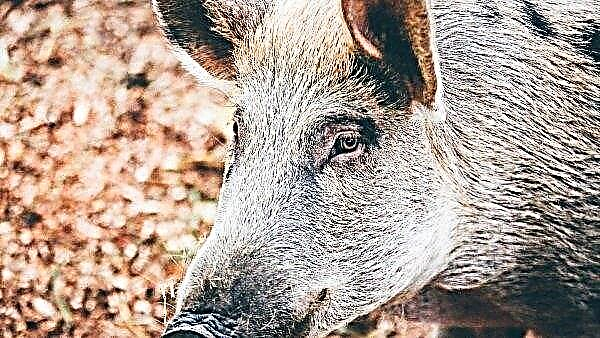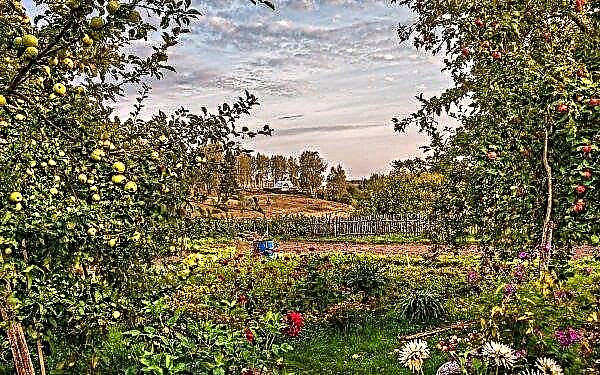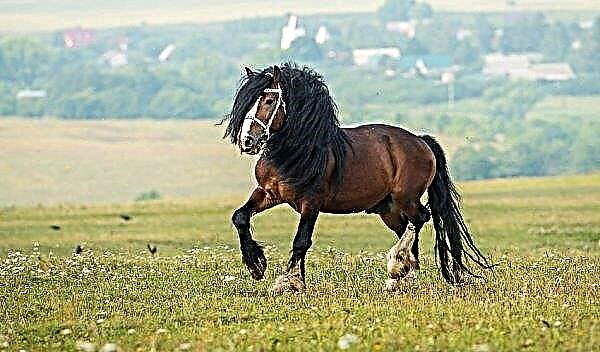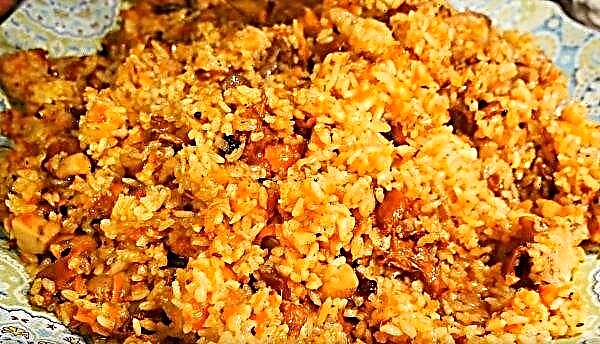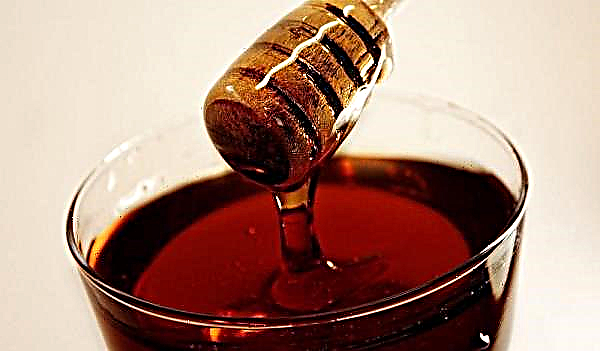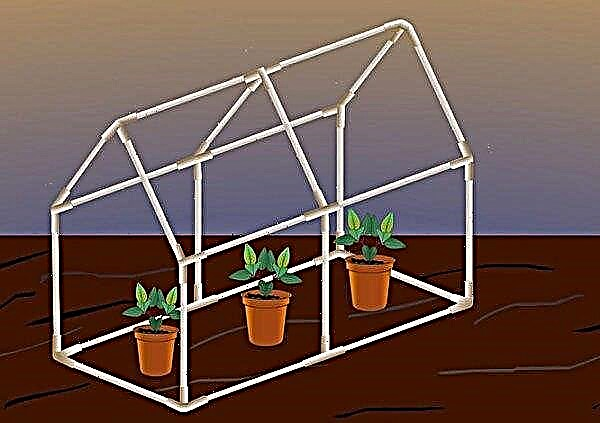Wanda is one of the most exotic orchids. Its distinguishing features are not only large bright flowers, but also an unusual root system. From this article you will learn how to care for Wanda in order to receive her magnificent flowering as a reward.
Botanical description of the plant
The homeland of Wanda is the tropical forests of India, China and Thailand. Most of its species are epiphytes, that is, they do not grow on the ground, but on other plants. Using their thick, airy roots, they get moisture from rainwater and even from the air. The root stem is as solid as wire. Above it is covered with velamen - a spongy multilayer fabric that protects the root from drought and is a nutrition channel for it.
This genus of orchids grows monopodially. This means that the main stem grows its peak until the end of the orchid's life, and its growth significantly dominates the growth of lateral shoots (pseudobulbs and lateral branches are almost not observed). The leaves are elongated, long peduncles with an inflorescence at the apex grow out of their sinuses.Externally, Wanda is similar to other orchids, but blooms more abundantly and produces larger flowers. On one peduncle, a whole bouquet blossoms, which exudes a delicate aroma. Flowering lasts 1.5–2 months. Subject to all the subtleties of care, it blooms several times a year.
| Plant height | up to 1 m |
| Stem | monopodial, cylindrical |
| Leaves | leathery, belt-shaped, bright green |
| Roots | airy, thick, highly developed, gray-green |
| Flower diameter | 8-15 cm |
| Colors | diverse |
Varieties
The Wanda genus includes about 60 species. Thanks to their ability to easily interbreed with each other, many hybrid varieties were bred. The most popular are only a few of them. Listed below are the features of each grade.
Did you know? In some species of orchids, flower stalks are simply huge. So, at the epiphytic orchid Phalaenopsis they reach 1 m.
Wanda Blue:
- stalk straight, up to 1 m in height;
- leaves are belt-shaped, up to 25 cm long and 3 cm wide;
- peduncles straight or oblique, form an inflorescence of 6-12 flowers;
- flowers are painted in different shades of blue with a mesh pattern, they are up to 10 cm in diameter;
- blooms in autumn and winter.
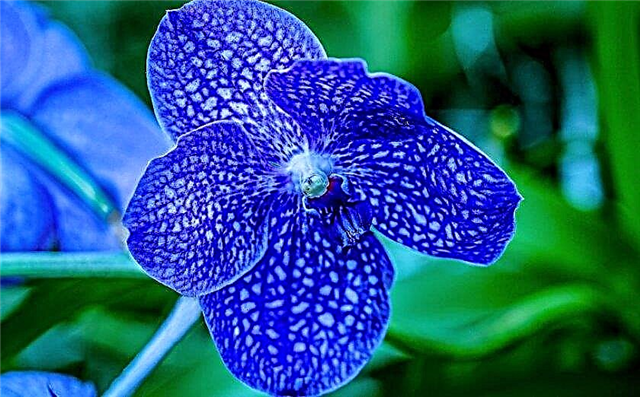
Sander:
- large bush;
- leaves are thin and quite long (up to 40 cm);
- on a peduncle 10-15 buds are tied;
- the color of flowers is pink in various shades, with a lip of a more saturated color (orange, brown);
- flowering autumn.
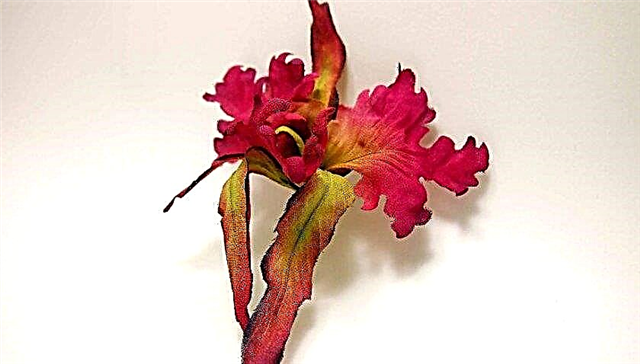
Rothschild:
- outwardly similar to previous species, since it is a hybrid produced from them;
- leaf-like leaves;
- multi-flowered inflorescences;
- flowers are light blue with purple streaks.
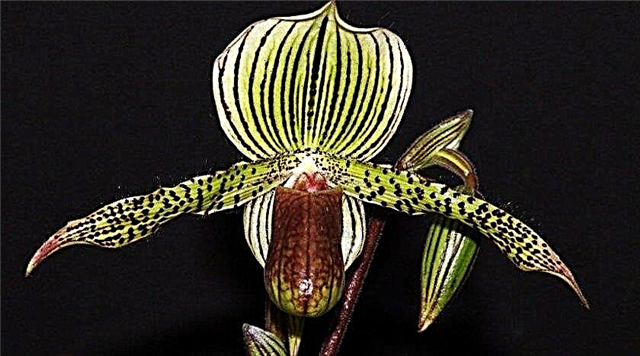
Grumpy:
- stem height - 2.5 m;
- leaves are smooth (smooth, rounded);
- on a peduncle from 3 to 6 large flowers;
- bud color: pale pink with a reddish lip;
- blooms in October.
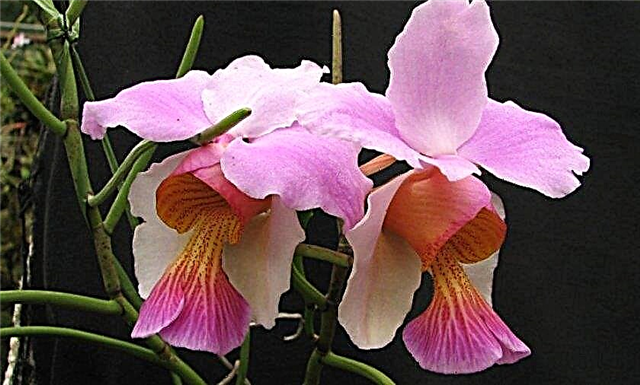
Tricolor, or tricolor:
- stem length reaches 1.5–2 m;
- leaf length - 25 cm;
- in an inflorescence of 7-10 large flowers;
- cream-white color with red-brown specks and stripes.
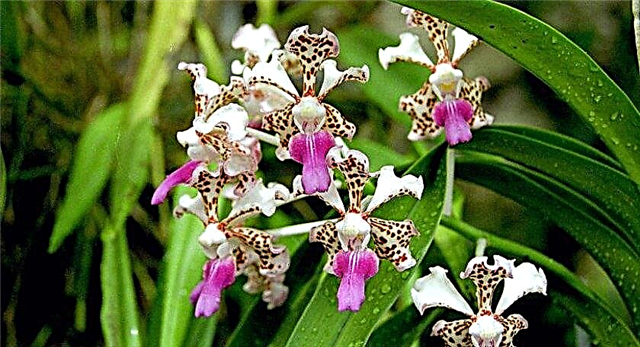
Microclimate
Wanda's natural habitat is tropical rainforests, the climate of which is significantly different from ours. Therefore, the grower needs to make enough effort to create conditions in the apartment that are as close to tropical as possible.
Did you know? The peculiarity of flowering is that only the buds that have blossomed are pale and small, but gradually they become larger and brighter.
Lighting
All Wanda varieties love sunny places. They need a lot of bright but diffused light. Leaves may get burned from direct sunlight. Therefore, these flowers are best placed on the eastern, western and southern windowsills. In the summer at noon on the south side you need to create a shadow. The daylight hours of this plant should last at least 12 hours year-round. Therefore, in winter it is advisable to extend the day using a phytolamp. If there is not enough light, the tropical plant will hibernate, which is unnatural for him. An ideal determinant of the amount of lighting are orchid leaves. If they are dark green, then there is little light. The leaves are light, pale, yellowish - the flower needs to be removed in the shade.
If there is not enough light, the tropical plant will hibernate, which is unnatural for him. An ideal determinant of the amount of lighting are orchid leaves. If they are dark green, then there is little light. The leaves are light, pale, yellowish - the flower needs to be removed in the shade.
Ventilation
Indian orchid needs fresh air. The room should be ventilated. In the warm season, the flower is taken out to the balcony or to the street. Some gardeners in the summer put a fan in the room. Access to fresh air is necessary not only for the green part of the bush, but also for its roots. For this reason, Vandu is often hung up so that the roots hang freely. If the room is cool, you do not need to put a fan. Such ventilation will weaken the flower.
Temperature mode
The room where Wanda grows should always be warm (+ 20 ... + 30 ° C). The ideal temperature is +25 ° C. When it drops below + 20 ° C, the protective functions of the plant are weakened, and it can become sick. If the room is cool in winter, then watering is stopped.
Important! Differences in day and night temperatures contribute to abundant flowering. But you should not allow much difference (10 ° C or more).
Air humidity
The air in the room should be very humid, like in the tropics. If the room has dry air, then the leaves and roots will dry out, unbroken buds will fall off. The optimum humidity level is 60–80%. This level can be achieved by spraying. For this, only warm, settled water is used, the temperature of which is 3-4 ° higher than room temperature. The frequency of spraying is related to the temperature in the room. In the summer heat, daily water procedures are necessary, and sometimes even twice a day. In winter, spraying in a cool room is contraindicated.
The frequency of spraying is related to the temperature in the room. In the summer heat, daily water procedures are necessary, and sometimes even twice a day. In winter, spraying in a cool room is contraindicated.
Home Care
The unusual structure of the Indian orchid requires an unusual approach in caring for it. The presence of a long "beard" of aerial roots encourages the grower to be very careful in handling the flower and carefully follow the recommendations of specialists.
Watering
Watering is one of the most important procedures. Water must be defended and heated so that it is 5-6 ° warmer than air in the room. There are several ways. They depend on how the orchid grows: whether with bare roots, in an empty glass bowl or in a pot with a substrate of pine bark.
How to water:
- spray the drooping roots (this is a common procedure, since the bare root system dries quickly);
- warm shower: place the bush in the bathroom and water the whole flower from the shower with very warm water until the roots turn green, then dry;
- in a container with warm water (basin) lower the roots of the plant for 10 or 20 minutes, let them drain. Repeat 1-2 times a week;
- pour warm water in a glass vase or jar (if Wanda grows in it) to cover all the roots and leave until it stops bubbling. Then drain the water. Repeat the procedure after 5-7 days;
- if the orchid grows in a pot, then it can be put in a container of water for half an hour (or gently water the substrate from a watering can). Water must be allowed to drain.

Fertilizer application
Since Wanda does not grow in the soil from which other plants are fed, it often needs to be fed: in the summer - every week, and in the winter - once a month. For this purpose, any complex fertilizer for orchids is perfect (dilute 1 g in 1 liter of water). During flowering, the plant needs potassium. Therefore, it is advisable to add potassium monophosphate (1 g) to conventional fertilizer.
Fertilizing is prepared liquid according to the instructions on the packaging and is carried out along with watering. The leaves of the flower will tell you when there are not enough nutrients, and when there are too few. With their shortage, the plant stretches and becomes weak. An excess of fertilizer makes the leaves lethargic, and the upper part soft.
Transfer
Transplantation is carried out in the spring as necessary.
- For what reasons the plant needs to be transplanted:
- the substrate in the pot has become too dense, does not allow water to pass through. It should be replaced;
- traces of rot appeared on the roots (they are removed);
- the previous pot became very cramped. Replace it with a more spacious one.
If you want to grow Vanda in a pot in it, you need to make a lot of drainage holes not only in the bottom, but also in the walls. The substrate should be very loose and dry quickly (pieces of bark of coniferous trees and coal are suitable). You can plant without a substrate in an open wicker basket. The roots will be well ventilated in it. Transplant Vanda as follows:
Transplant Vanda as follows:
- Carefully remove the roots of the flower from the old pot. If it is necessary to soften the substrate, it must first be abundantly watered.
- To clean the roots: cut dry fragments damaged by rot and roots too long.
- Slices should be dusted with coal dust.
- Carefully lay the roots in a new container and fix the bush (you can wire).
- Sprinkle the roots with a fresh substrate.
Important! The colder it is on the street, the less light, which means that orchids are watered less often. Watering at night is not recommended.
Reproduction by children
In other ways, it is impossible to propagate a home Vanda. Lateral processes almost never appear. Children will be ready for separation from the mother bush when they grow their roots (not shorter than 5 cm).
How to cut and plant the shoot:
- With a sharp knife, carefully, so as not to damage either an adult or a young plant, to separate the process.
- Sprinkle the slices with charcoal flour or grease with greens.
- Identify the plant in the smallest container (for example, in a disposable cup). The substrate does not need to be strewed.
- Watering the slices for the first 5 days is not necessary.
- When the shoot grows to 20 cm, it is transplanted into a permanent pot.
The young bush will begin to bloom only after 4-6 years.
Growing difficulties
Improper care can provoke the development of the disease or an attack of pests.
Disease
- the most common: fungal disease fusarium (in which the stem and leaves rot) and root rot affecting the roots;
- causes: excessive watering;
- how to treat: cut off the diseased leaves, parts of the trunk or root, treat with zelenka and fungicide. Protect the slice from getting wet.
Pests:
- the most common: mealybug and scale insects;
- causes: too dry air, poor lighting, infected substrate;
- how to win: wipe the leaves with a cotton swab dipped in an alcohol or soap solution, spraying the bush with karbofos (the solution is prepared according to the instructions) or another insecticide.






